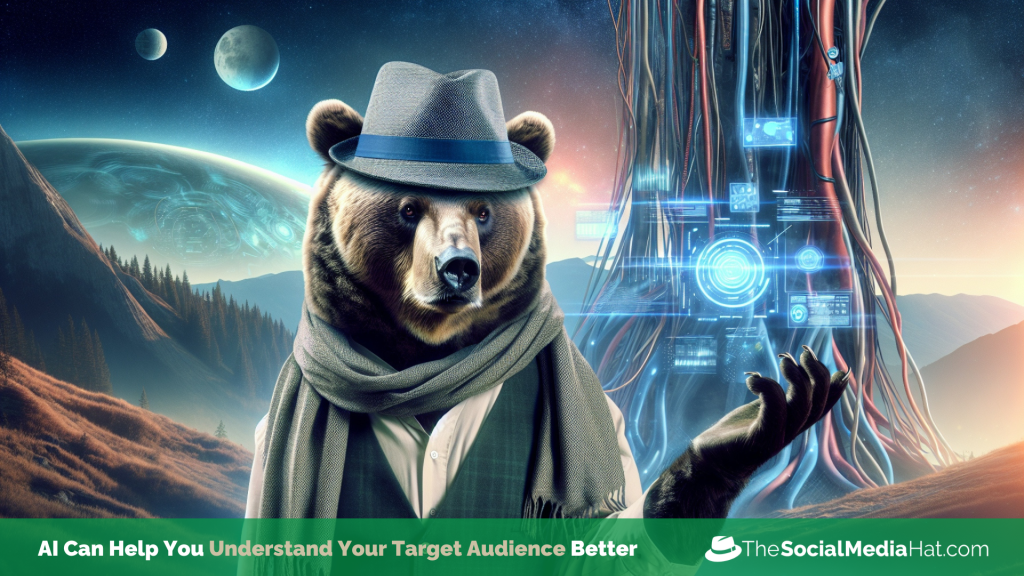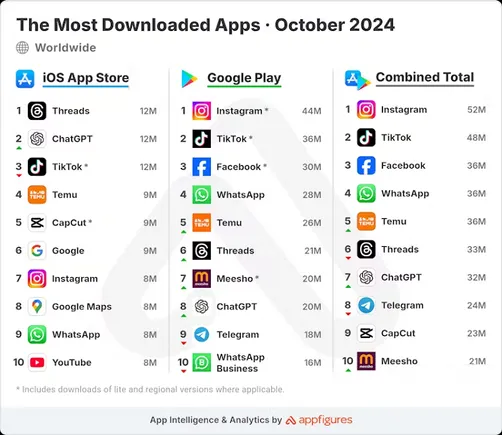Reading Time: 6 minutes
The marketing world is abuzz with marketers sharing about how useful AI is. Tools are flooding the market, affecting many aspects of marketing. But among all the shiny new gizmos and gadgets, there is the struggle to understand how AI helps you.
It doesn’t have to be a shot in the dark to learn how to use AI to grow your business. This article will discuss how these tools help you achieve your goals.
What is a target audience?
A target audience is a group of potential customers who are most likely to be interested in what you are selling.
A target audience is a subset of the larger pool of potential customers called a target market.
For instance, imagine your target market is laptops. A target audience for laptops could be college freshmen, teenage gamers, or emerging professionals.
You can get as granular as you want with target audiences.
For example, one of your marketing strategies might include a target audience of 21-35-year-old creative professionals living in Tucson, Arizona.
Why care about targeting an audience?
Many of us ignore marketing messages until we need them. In fact, a survey by Optimove showed that 73% of consumers wanted fewer marketing messages. They’re simply sick of them.
With the onslaught of so much digital media before our eyes every day, we tune out things we don’t need to register.
Until we do.
We’ve all been in a situation where we need a new kitchen appliance, furnace, car, or laptop and suddenly become very interested in different models, features, and prices of gadgets we’ve probably passed by ads for a million times before.
Now, imagine you’re looking for a new dishwasher. One morning, you open your inbox and see “Labor Day Sale! 25% Off on All Kitchen Appliances!” from Lowes.
Usually, you’d throw it in your trash folder without a second thought.
But not today! Today, you’re tired of handwashing dishes. Today, you want to save some money on a replacement. Today, you’re wondering if Lowe’s will haul away your old dishwasher or if you must do it yourself.
So you click on the email.
And there, in all their digital glory, are a selection of discounted dishwashers. You go into Lowes that evening and buy one.
You are the target audience in this scenario.
You wouldn’t have cared about the email if you hadn’t been looking for a dishwasher. You would have toned it out like the dozens of others you get in your inbox every day. But you were precisely the type of potential buyer Lowes was looking for, so their email marketing worked.
This is why it’s essential to market to people who are receptive to what you’re selling.
The most beautifully, carefully crafted marketing efforts in the world will be ineffective if the recipients are not interested in what you’re selling.
But how did Lowes know you were looking for a dishwasher?
This is where the magic of AI target audience tools comes into play.
How AI target audience tools help you reach buyers
AI tools aren’t flash-in-the-pan gimmicks. They are adept at scaling your business and increasing your revenue, starting with identifying your ideal customer.
Here’s how.
- Predictive analytics
Predictive analysis is when AI analyzes past data to build prediction models for future behavior.
In our above example, for instance, Lowe’s could use predictive analysis to assume you were in the market for a new dishwasher in a number of ways:
- You bought a dishwasher from them ten years earlier, and that is usually as long as dishwashers last
- You are in the demographic of people who typically buy their dishwashers
- You live in an area where lots of remodels happen frequently
- You clicked on an ad of theirs at some point in the past
These are just a handful of examples. You can see how valuable it is to find and target specific audience segments for marketing strategies.

Predictive analysis is also effective for risk management, fraud detection, and operations optimization.
- Virtual assistants and chatbots
Chatbots and virtual assistants save time and resources to help run your business, but that’s not their only use.
When a chatbot or virtual assistant is helping a customer, it also gathers data.
This data is a goldmine of valuable insights into customer thoughts, concerns, and preferences.
There is nothing more valuable in your marketing efforts than understanding your audience. Remember our Lowe’s example? When you know your audience, their pain points, and where your marketing message is meeting them in their lives, your chances of making a sale are much higher.
- Automated market research
Market research is the cornerstone of many content strategies. Good market research will give you valuable insights into customer behaviors and preferences that help guide you toward targeting messaging.
The downside is that it takes time—lots of it. Collecting, analyzing, refining, and mapping data is a full-time job, but not with AI target audience tools.
Automated market research gives you an accurate look into real-time data with the click of a few buttons.
The right automated market research platform will gather, analyze, and interpret the data so that it is helpful to you when making decisions that will make your business thrive.
- Behavioral analytics
Behavior analytics track how users are interfacing with your product or service. This is incredibly useful because how you think users will behave is often not how they actually behave.
Google Analytics is a fantastic place to start with looking at consumer behaviors.
It will show you:
- Converting keywords
- Navigation paths
- Session duration
- Click patterns
- Traffic flows
Among dozens of other metrics.

Heat maps from tools like Glassbox are also beneficial. Heat maps show you exactly where your audience interacts and where you are losing opportunities for engagement.
For example, suppose people are repeatedly clicking on a static image. In that case, it lets you know you could replace it with an explanation video, testimonial, or how-to guide that would interest those who click.
- Hyperpersonalization in content creation
A report by McKinsey and Company discovered that 71% of consumers expect personalization. More than that, 76% feel frustrated when marketing is not personalized.
Luckily, AI target audience tools make it easy.
Let’s say you are a company like Cruise America, which provides RV rentals across the U.S.
AI target audience tools will analyze regional preferences, behaviors, and interests, giving guidance on effective marketing strategies and content.
For example, for their RV rentals in Denver, where outdoor adventures are popular, AI can help them develop content ideas that highlight RV trips to the Rocky Mountains or nearby national parks.
The tour agency Band of Brothers Tours, which specializes in WWII tours of Normandy, is another example.
They know their ideal customers are soldiers, veterans, and history buffs. But AI further narrows down their audience demographics so they know:
- The travel needs and concerns of their target demographics
- Which battles are their customers most interested in
- What time of year does their target audience travel
- From what country their average customer is from
- How old their average customer is
- The budget of the average buyer
And more besides. Armed with information like this, personalizing all of your marketing efforts is a breeze.
- Auto-generated customer personas
Customer personas are a common tool marketers use to symbolize their target audience with a fictitious buyer profile.
These profiles outline the ideal customer and all of their demographic and psychographic information.
While the potential customers in these profiles are fictional characters, the stats that make them up should be data-driven based on the information you have accumulated through research.
AI target audience tools take all of your data and create the ideal customer profile for your target audience within seconds.
In most cases, you simply have to enter prompts to receive a data-backed ideal customer profile to use while designing your marketing strategies.
- A/B test comparisons
A/B testing is the practice of creating two versions of a marketing asset—a landing page, email, social media post, or similar—to see which performs the best.
This lets you see how audiences in different demographics behave to your marketing messages and sales funnels.

AI tools rapidly highlight the differences in user behavior in A/B tests, giving you the most valuable insights quickly. With this information, refine your UX design, calls to action, and marketing assets to capture the audience that is engaging the most.
- Idea generation
ChatGPT is a powerful marketing tool. It generates content, synthesizes information, creates outlines, and much, much more.
If you are looking for a budget-friendly way to identify your target audience, try inputting all of the demographic and consumer data you have into ChatGPT as a prompt and ask it to identify customer segments.
If you already have your target audience identified, use ChatGPT to outline effective marketing strategies and targeted campaigns for them.
ChatGPT is not infallible. You must still bring your A-game to analyze the output. But if you find yourself hitting a brick wall in idea generation or the next positive step forward, ChatGPT can help you shake off the rust.
I’ve dedicated my career to mastering human-centric marketing that uses technology to elevate marketing excellence and boost conversion rates.
Leveraging AI is the future of all great marketing, and it’s at your fingertips. If you’re ready to implement AI tools into your business, let’s talk.

Related
Discover more from The Social Media Hat
Subscribe to get the latest posts sent to your email.










